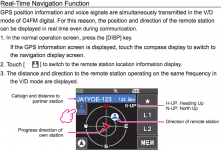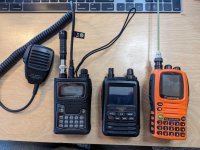GROL
Member
- Joined
- Aug 29, 2017
- Messages
- 573
5 miles is going to be difficult with any handheld radio. You can expect probably no more than 2 miles and realiably 1 mile in decent conditions, unless there is a very nearby repeater. Especially in terrain with lots of trees and hills. As said before, MURS using VHF will have a little advantage over UHF on GMRS and FRS over terrain.Thanks. I had originally posted this thread in the "Amateur Radio" section but it looks like it was moved.. perhaps it is better suited in this section.
Okay so i am mainly looking for something reliable to communicate to my team members during a hike in mountains. A two way radio while i am in the back country. The range would be a key factor but it should ideally be within 5 miles or so of each other.
What would you suggest based on this or is there any other info you will need? thx in advance!
Will the other team members be licensed? You may want to consider 2 watt FRS channels or maybe MURS radios of at least 2 watts. You can also consider GMRS but team members will need a license which were recently lowered to $35 for 10 years. You could use 5 watt GMRS handhelds for improved range but still 5 miles is unlikely.
Not to be sarcastic, but where you will be is there any possibility of cellular coverage? I know this can definately be a big problem in mountain terrain, but are you lucky enough there may be some coverage? Voice may be unreliable, but texting may be practical with spotty coverage.
Last edited:





